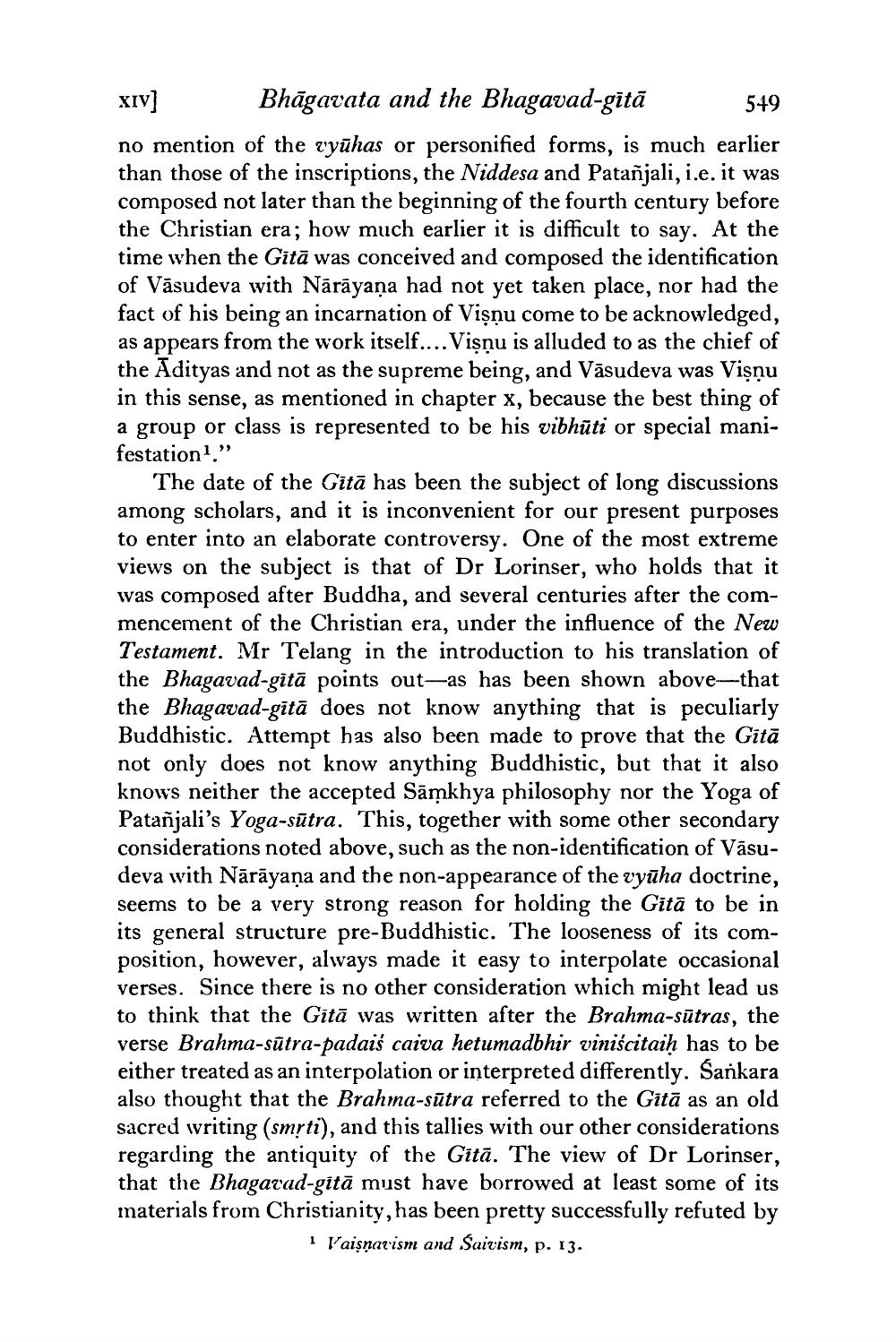________________
XIV]
Bhagavata and the Bhagavad-gitā
549
no mention of the vyuhas or personified forms, is much earlier than those of the inscriptions, the Niddesa and Patanjali, i.e. it was composed not later than the beginning of the fourth century before the Christian era; how much earlier it is difficult to say. At the time when the Gitā was conceived and composed the identification of Vasudeva with Nārāyaṇa had not yet taken place, nor had the fact of his being an incarnation of Viṣņu come to be acknowledged, as appears from the work itself.... Visnu is alluded to as the chief of the Adityas and not as the supreme being, and Vasudeva was Viṣṇu in this sense, as mentioned in chapter x, because the best thing of a group or class is represented to be his vibhuti or special manifestation1."
The date of the Gitā has been the subject of long discussions among scholars, and it is inconvenient for our present purposes to enter into an elaborate controversy. One of the most extreme views on the subject is that of Dr Lorinser, who holds that it was composed after Buddha, and several centuries after the commencement of the Christian era, under the influence of the New Testament. Mr Telang in the introduction to his translation of the Bhagavad-gitā points out-as has been shown above-that the Bhagavad-gitā does not know anything that is peculiarly Buddhistic. Attempt has also been made to prove that the Gitā not only does not know anything Buddhistic, but that it also knows neither the accepted Samkhya philosophy nor the Yoga of Patanjali's Yoga-sūtra. This, together with some other secondary considerations noted above, such as the non-identification of Vasudeva with Nārāyaṇa and the non-appearance of the vyūha doctrine, seems to be a very strong reason for holding the Gita to be in its general structure pre-Buddhistic. The looseness of its composition, however, always made it easy to interpolate occasional verses. Since there is no other consideration which might lead us to think that the Gita was written after the Brahma-sutras, the verse Brahma-sūtra-padaiś caiva hetumadbhir viniścitaiḥ has to be either treated as an interpolation or interpreted differently. Sankara also thought that the Brahma-sutra referred to the Gita as an old sacred writing (smrti), and this tallies with our other considerations regarding the antiquity of the Gita. The view of Dr Lorinser, that the Bhagavad-gitā must have borrowed at least some of its materials from Christianity, has been pretty successfully refuted by 1 Vaisnavism and Saivism, p. 13.




